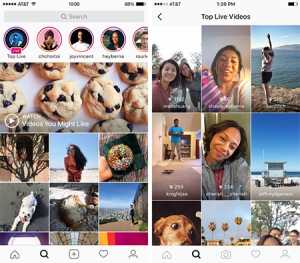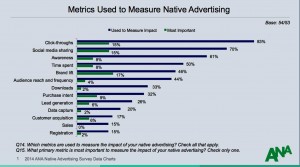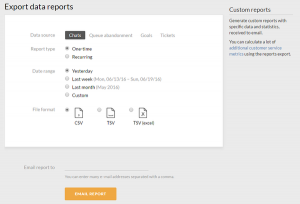
Does it seem like your VPs of sales and marketing can’t agree on anything?
Chances are, it’s more than a case of conflicting personalities. Part of the problem could be that they don’t understand each other very well and are used to working in silos. It’s essential for these two departments to work well together to achieve revenue goals, and as a leader, it’s your responsibility to facilitate that cooperation.
Within any team of leaders from multiple department or regions, success hinges on their ability to collaborate effectively. There are numerous challenges standing in the way of collaboration, including generational gaps, lack of face-to-face interaction in virtual teams and lack of clear decision-making authority.
Here are five unique activities that can enhance cross-functional team building.
Generational Trivia
What better way to get to know someone than to ask them questions? Challenge your employees to divide up by generation. Millennials, Gen X and Baby Boomers can answer questions from generations besides their own. This will shed light on each generation’s defining features and provide more understanding of one another. It should also illustrate the differences between generations that team leaders need to address.
The main idea for this game is not to pit one generation against another, but to point out the differences in a friendly environment and break the ice among co-workers of different generations who may not interact on a regular basis. Questions can be work-related (“Millennials, which of these phrases did Baby Boomers say you overuse most in the workplace? A) Like B) Literally C) I Can’t Even.”) or generation-specific (“Boomers, what does FOMO mean?”).
Two Truths and a Lie
This game is a great way to cultivate trust for team members who do not know one another. Try it on your next kick-off meeting. Each person must think of three statements about themselves, with two being true statements and one being false. The group must correctly guess which statement is false.
Employees sharing information about themselves helps to promote a friendly, trustworthy environment and opens the door to conversations between the most unlikely colleagues. It serves as a tool for communication that can lead to new friendships and even a few laughs.
Team TED Talks
Divide your team into groups and assign each group to give a 15- to 20-minute presentation once a month. Let them choose a topic they are familiar with and comfortable speaking about.
This project has many positive aspects for employees, including the time they spend together preparing the presentation and sharing ideas.
Additionally, TED talks provide a platform for your team members to practice their public speaking skills and become confident speaking in front of their leaders and their peers. TED talks often foster development and expose employees to new ideas.
Scavenger Hunts
Scavenger hunts are a fun way for team members to take a break from their busy work schedules and participate with their colleagues in a competitive quest to be the first to collect miscellaneous items. These can be fun, random objects such as another person’s business card (besides their own), a restaurant napkin, a takeout menu, or an old hotel room key.
In addition to improving collaboration, putting team members in an environment outside of their daily work tasks can help rejuvenate their minds and allow them to be creative in ways they normally aren’t in their everyday positions. It calls for them to come up with a strategy, and requires participation and effort from all team members to gather the items as quickly as possible. Google has used this team-building activity in the past during its Hong Kong regional training and found it to be a successful use of their time.
For virtual teams, provide each team member with a list of items they must acquire and give them a time frame. They must photograph ALL of their items once they’ve found them for accuracy purposes and share it with the group. Apps like Scavify and GooseChase help make the process easier for employers by providing tasks teams must complete and enables photos to be uploaded while tracking participants’ points.
Training Programs
Training is an important part of leadership’s ability to perform at top levels across different departments. Within cross-functional teams, leaders must be able to foster cooperation to achieve results. Ensuring people have the skills to effectively influence others, build and sustain trust, resolve differences, and know when and how to involve others in decisions can help achieve that outcome.
If training sounds like a drag, there are ways to make it more engaging and interactive by disguising it as a game.
Gamification is simply applying game techniques or gaming elements in the workplace to motivate people to achieve their goals.
While gamification today often involves digital technology, such as computer programs that allow employees to complete simulated tasks and earn points, it can also include a variety of interactive learning techniques, such as role-playing. Using gamification in leadership development has worked well for a number of companies across industries, from Nike, Starbucks, and the U.S. Army to the Deloitte Leadership Academy, which saw a 37 percent increase in the number of returning weekly users after giving learners an opportunity to earn badges after completing training.
OnPoint Consulting offers practical, research-based training for cross-functional teams and leaders that’s available in person and online. We even have e-learning programs for cross-functional teams to make training more affordable and convenient, as well as interactive online role-playing scenarios for virtual leaders. Topics include decision-making, critical thinking, and accountability.
Whether it’s taking more time to get to know your team or taking a break from your routine to play a game that encourages you to work together in different ways, activities like these have helped thousands of companies around the world. While it may seem counterproductive for your employees to take time out of their day to do something that’s not directly tied to profit, these activities can establish trust, build relationships, promote open discussion, and brainstorming and take productivity to new levels.
When cross-functional teams collaborate effectively, they set themselves up for success. Even with busy agendas most workplaces have, it’s worthwhile to take time out to participate in team-building activities. Leaders who can skillfully moderate collaborative activities among their colleagues will be better prepared to handle other work conflicts as well.
Want to improve your team’s performance in the new year? Try a free demo of our e-learning programs today.
Business & Finance Articles on Business 2 Community(91)






